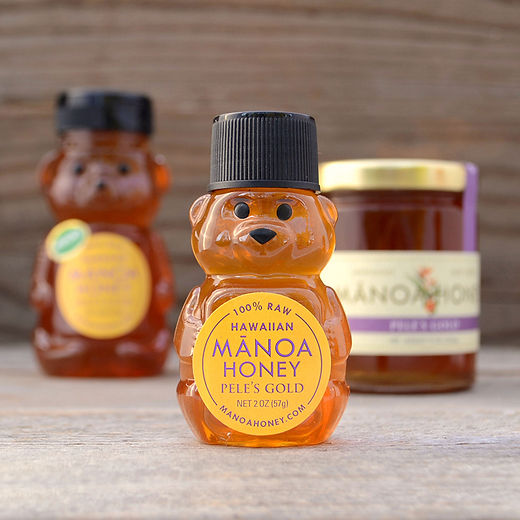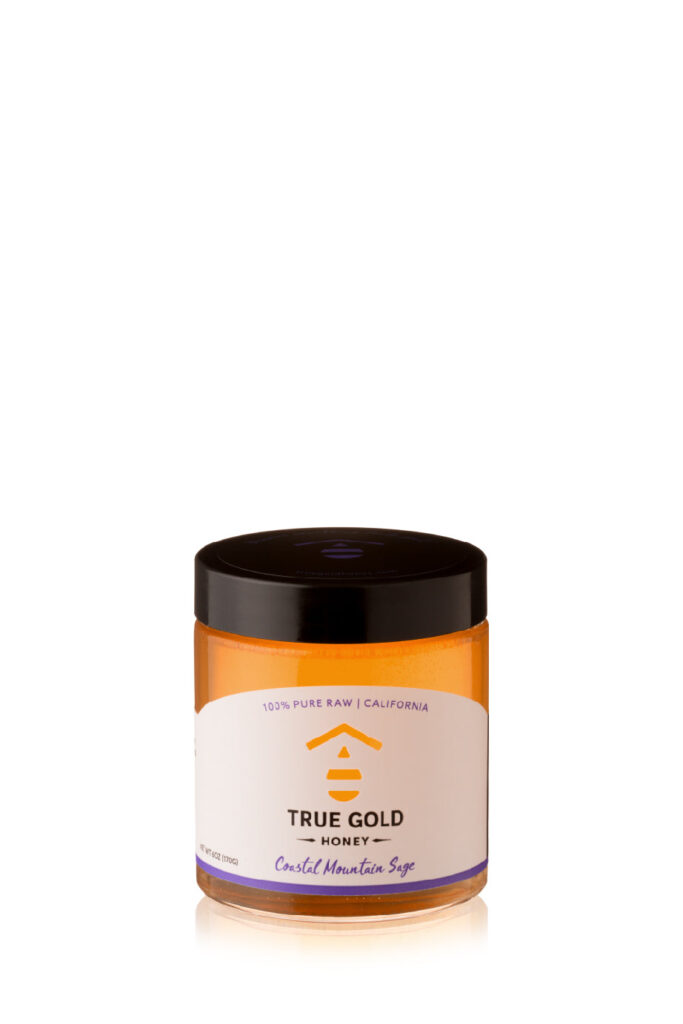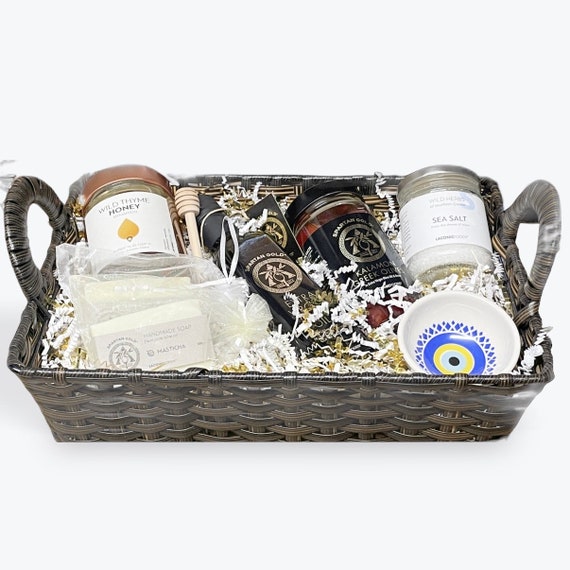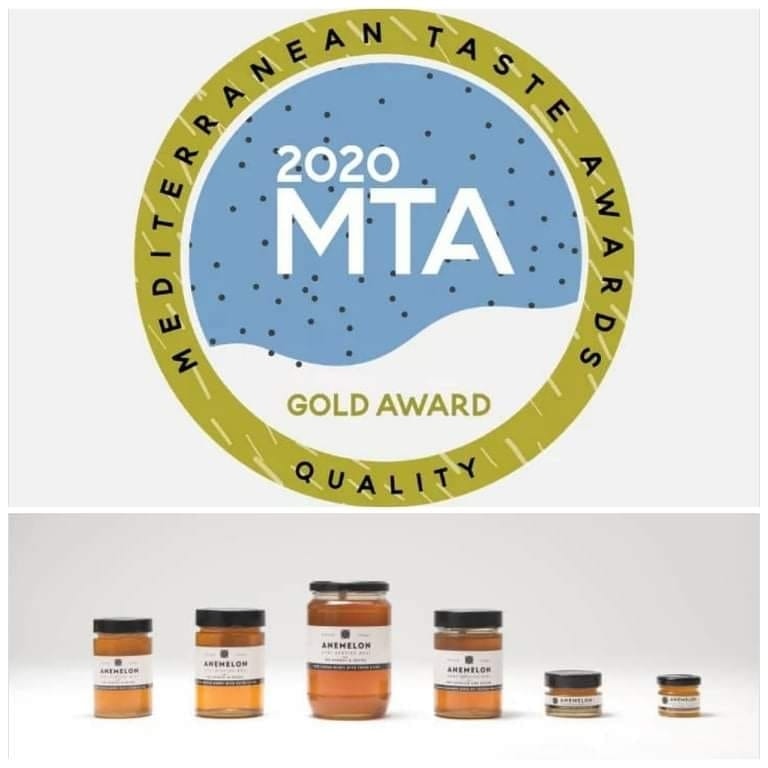
Imagine indulging in a unique and luxurious taste that can transport your senses to the idyllic shores of the Mediterranean. Enter coastal honey, an exquisite delicacy that captivates your palate with its distinct flavor profile. From the sun-kissed landscapes of Greece to the rugged coastlines of Spain, this golden nectar is imbued with the essence of the Mediterranean, offering a symphony of floral notes and a touch of sweetness. Discover the allure of this exquisite treasure and elevate your culinary experiences to new heights with the opulence of coastal honey.
1. What is Coastal Honey?
1.1 Definition
Coastal honey refers to the honey produced in regions along the coastlines of various countries, particularly those bordering the Mediterranean Sea. This type of honey is known for its distinct flavors and unique characteristics, which are influenced by the local flora and environmental factors present in these coastal regions.
1.2 Production Process
The production process of coastal honey involves the careful collection of nectar by honeybees from the blossoms of plants found in the coastal areas. The bees then transform the nectar into honey through a process of enzymatic action and evaporation. Beekeepers play a crucial role in maintaining the hives, ensuring the well-being of the bees, and harvesting the honey.
1.3 Unique Qualities
Coastal honey possesses several unique qualities that set it apart from honeys produced in other regions. The proximity of the coastal areas to the Mediterranean Sea and the abundance of diverse plant species in these regions contribute to the distinct flavors, floral notes, and aromas found in coastal honey. The gentle sea breeze and the coastal microclimate also add to the overall character of the honey, resulting in a luxurious taste that is sought after by honey enthusiasts worldwide.
2. The Coastal Honey Regions
2.1 Southern Italy
Southern Italy is renowned for its exceptional coastal honey production. The regions of Calabria, Sicily, and Puglia, with their fertile soil and Mediterranean climate, offer optimal conditions for the production of high-quality honey. The diverse flora, including citrus trees, wildflowers, and aromatic herbs, gives the honey from this region its unique and delightful flavors.
2.2 Greece
Greece, with its picturesque islands and stunning coastline, is also a prominent producer of coastal honey. The Greek honey tradition dates back centuries, and the country’s coastal regions, such as Crete and the Aegean islands, are known for producing honey with a rich floral bouquet. The unique combination of thyme, sage, pine, and other Mediterranean plants lends Greek coastal honey its distinctively delicious taste.
2.3 Spain
Spain boasts a vast coastline that stretches along both the Mediterranean Sea and the Atlantic Ocean. This diverse coastal landscape provides an ideal environment for honey production. Regions like Andalusia and Catalonia produce exquisite honey varieties, benefiting from the wide variety of aromatic flowers, herbs, and fruit trees found in the area. Spanish coastal honey is known for its rich flavors and captivating aromas.
2.4 Turkey
The Turkish coast offers a wide range of honey varieties, thanks to its diverse flora, including wildflowers, citrus trees, and herbs like thyme and lavender. The coastal regions of Antalya, Mugla, and Izmir are particularly renowned for their honey production. Turkish coastal honey is cherished for its delicate taste and the harmonious blend of flavors that reflect the unique botanical wealth of the region.
2.5 Tunisia
Tunisia, located on the northern coast of Africa, is celebrated for its coastal honey production. The country’s warm climate and fertile land provide an excellent environment for bees to collect nectar from a wide variety of plants, including orange and lemon trees, jasmine, and various wildflowers. Tunisian coastal honey is characterized by its golden color and delightful taste, making it a treasured ingredient in both culinary and medicinal traditions.

3. Varieties of Coastal Honey
3.1 Acacia Honey
Acacia honey, one of the most popular varieties of coastal honey, is prized for its light color and delicate, floral flavor. It is predominantly produced in coastal regions across the Mediterranean, where the acacia trees thrive. Acacia honey is cherished for its mild sweetness and its ability to retain its liquid form for extended periods, making it a favorite choice for drizzling over desserts or adding a touch of natural sweetness to beverages.
3.2 Orange Blossom Honey
Orange blossom honey is a true Mediterranean delight, known for its delightful citrus aroma and flavor. This fragrant honey is produced when bees collect nectar from the blossoms of orange trees found in coastal regions such as Southern Italy, Greece, and Spain. Orange blossom honey lends a unique, fragrant note to dishes, making it a cherished ingredient in both sweet and savory recipes.
3.3 Thyme Honey
Thyme honey, commonly found in coastal regions throughout the Mediterranean, is renowned for its intense flavor and herbal notes. The bees collect nectar from the blossoms of wild thyme plants, resulting in a honey with a distinctive taste that captures the essence of the Mediterranean landscape. Thyme honey is highly valued for its antioxidant properties and is often used as a natural remedy for various ailments.
3.4 Rosemary Honey
Rosemary honey is a delightful coastal honey variety characterized by its golden color and aromatic taste. Bees collect nectar from the blossoms of rosemary plants, which thrive in the coastal regions of the Mediterranean. The distinct taste of rosemary honey makes it a sought-after ingredient in both sweet and savory dishes, adding a touch of sophistication and complexity to culinary creations.
3.5 Heather Honey
Heather honey, harvested from the coastal regions of countries like Spain and Greece, is renowned for its dark amber color and robust flavor. The bees collect nectar from the vibrant purple flowers of heather plants, resulting in a honey with a distinctive, full-bodied taste. Heather honey is often prized for its antibacterial properties and is treasured for its unique and complex flavor profile.
4. Health Benefits of Coastal Honey
4.1 Antioxidant Properties
Coastal honey, like other honey varieties, is known for its antioxidant properties. Antioxidants help protect the body from the harmful effects of free radicals, reducing the risk of chronic diseases such as heart disease, cancer, and neurodegenerative disorders. The diverse plant sources found in coastal regions contribute to the rich antioxidant content of coastal honey, making it a valuable addition to a healthy diet.
4.2 Anti-inflammatory Effects
Coastal honey has been shown to exhibit anti-inflammatory effects, making it beneficial for managing and preventing inflammation-related conditions. The natural compounds found in honey, including flavonoids and phenolic acids, contribute to its anti-inflammatory properties. Adding coastal honey to your diet may help reduce inflammation and promote overall well-being.
4.3 Digestive Health
The consumption of coastal honey has long been associated with positive effects on digestive health. Honey, including coastal honey, contains prebiotics, which promote the growth and activity of beneficial gut bacteria. These probiotics play a crucial role in digestion, nutrient absorption, and maintaining a healthy immune system. Incorporating coastal honey into your diet can support a healthy gut and improve digestive function.
4.4 Immune System Boost
Coastal honey contains natural compounds that support a healthy immune system. The antibacterial and antimicrobial properties of honey help fight against pathogens and strengthen the body’s defenses. Regular consumption of coastal honey may help enhance immune function and protect against common illnesses.
4.5 Skin and Hair Benefits
Coastal honey offers various benefits for the skin and hair. Its natural humectant properties make it an excellent moisturizer, helping to hydrate and nourish the skin. Coastal honey is also believed to have antibacterial properties that can help combat acne and other skin conditions. When used as a hair treatment, coastal honey can condition and moisturize the hair, promoting shine and improving scalp health.

5. Culinary Uses of Coastal Honey
5.1 Enhancing Flavors
Coastal honey is a versatile ingredient that can enhance the flavors of both sweet and savory dishes. Its unique floral notes and distinctive taste complement a wide range of ingredients. Whether used as a finishing touch on a salad, mixed into a marinade, or drizzled over cheese, coastal honey adds depth and complexity to culinary creations.
5.2 Sweetening Beverages
Coastal honey is an ideal natural sweetener for beverages. Its unique flavors can transform a simple cup of tea or coffee into a luxurious experience. Whether you prefer a delicate orange blossom honey in your tea or a richer rosemary honey in your espresso, coastal honey offers an inviting sweetness that elevates your favorite drink.
5.3 Baking and Desserts
Coastal honey is a baker’s secret weapon, adding moisture, depth, and complexity to baked goods and desserts. Replace traditional sweeteners with coastal honey in recipes for cakes, cookies, and breads to impart a distinctive flavor. The diverse varieties of coastal honey offer endless opportunities for indulgence, from lavender-infused honey for a fragrant cake to thyme honey for a unique twist in your favorite dessert.
5.4 Cheese Pairings
Coastal honey is a delightful accompaniment to a cheese platter. The contrasting flavors of sweet honey and savory cheese create a harmonious balance that delights the taste buds. Drizzle coastal honey over mild cheeses such as brie or goat cheese, or pair it with stronger and aged cheeses for a delightful combination of flavors.
5.5 Marinades and Glazes
Coastal honey is an excellent choice for marinades and glazes, adding a touch of sweetness and depth to grilled meats, vegetables, and seafood. The natural sugars in coastal honey caramelize beautifully when cooked, creating a flavorful crust on grilled food. Whether you prefer a citrus-infused honey for a tangy marinade or a thyme honey glaze for a savory dish, coastal honey is a versatile ingredient that enhances the taste of your culinary creations.
6. Sustainable Beekeeping Practices
6.1 Importance of Bee Conservation
Bee conservation is essential for the sustainability of coastal honey production and the overall health of ecosystems. Bees play a vital role in pollinating plants, contributing to biodiversity and ensuring food security. Supporting bee conservation efforts, such as creating bee-friendly habitats and reducing pesticide use, is crucial to safeguarding the future of coastal honey and protecting the delicate balance of the coastal ecosystems.
6.2 Organic Beekeeping Methods
Many beekeepers practicing organic beekeeping methods play a fundamental role in producing high-quality coastal honey. Organic beekeeping avoids the use of chemical treatments and pesticides, prioritizing the well-being of the bees and maintaining the natural integrity of the honey. By choosing honey produced using organic beekeeping methods, you support sustainable practices and contribute to the preservation of coastal ecosystems.
6.3 Protecting Coastal Ecosystems
Coastal ecosystems are among the most diverse and fragile in the world, and their preservation is essential for the production of high-quality coastal honey. Sustainable beekeeping practices ensure that the coastal flora and fauna are protected, preventing any negative impact on the delicate balance of these ecosystems. Beekeepers and environmental organizations work hand in hand to conserve coastal habitats and contribute to the overall health and biodiversity of the region.
6.4 Supporting Local Beekeepers
Supporting local beekeepers is a crucial step in promoting sustainable coastal honey production. By purchasing honey directly from small-scale beekeepers, you help support their livelihoods, foster economic development in coastal communities, and contribute to the preservation of traditional beekeeping practices. Additionally, local beekeepers often prioritize sustainable and ethical practices, ensuring that the honey you enjoy is of the highest quality and produced with care for both the bees and the environment.
6.5 Fair Trade Honey
Choosing fair trade honey supports ethical practices and fair wages for beekeepers in coastal regions. Fair trade certification ensures that honey is produced under strict social, economic, and environmental standards, benefiting both the local communities and the consumers. By purchasing fair trade honey, you make a positive impact on the lives of beekeepers and their families, helping to create a more equitable and sustainable honey industry.

7. The Significance of Terroir
7.1 Influence of Climate
The climate of coastal regions plays a significant role in shaping the flavor profile and characteristics of coastal honey. The unique combination of warm summers, mild winters, and the influence of sea breezes contributes to the development of distinct flavors and aromas in the honey. The warmer climate and ample sunlight encourage the growth of a diverse range of flowering plants, enriching the nectar collected by bees and resulting in a truly exceptional honey.
7.2 Floral Sources
The flowers in coastal regions contain the nectar that bees collect, and the variety of floral sources greatly impacts the taste and aroma of coastal honey. Each flower contributes its own flavors and qualities to the honey, ranging from delicate citrus notes of orange blossoms to the robust herbal essence of thyme and rosemary. The diverse botanical tapestry found in coastal regions creates a symphony of flavors that make coastal honey a truly exceptional culinary delight.
7.3 Geographical Elements
The geographical elements of coastal regions, such as the proximity to the sea, elevation, and soil composition, also influence the taste and character of coastal honey. The gentle sea breeze caresses the blossoms, carrying the salt-laden air and depositing minerals onto the flowers. These unique geographical elements contribute to the terroir of coastal honey, adding subtle nuances and complexity to its taste, making it a captivating experience for the palate.
7.4 The Taste of Terroir
Terroir, the combination of climate, soil, flora, and geographical elements, gives coastal honey its distinct taste of place. The delicate balance of these factors creates honey that reflects the unique character of the coastal region where it is produced. The coastal terroir imparts flavors that cannot be replicated elsewhere, making each variety of coastal honey a true representation of its origin and a valuable gastronomic treasure.
7.5 Tracing Honey Origins
Tracing the origins of coastal honey allows consumers to appreciate the unique terroir and support sustainable beekeeping practices. By seeking out honey with clear labeling indicating the specific coastal region where it was produced, you have the opportunity to experience the flavors and aromas of that particular terroir. Tracing honey origins also helps ensure that the honey you enjoy is authentic, ethically produced, and sourced from reputable beekeepers.
8. How to Choose and Store Coastal Honey
8.1 Quality Indicators
When choosing coastal honey, several quality indicators can help ensure you are getting a premium product. Look for honey that is free of any additives or artificial ingredients. The color of the honey can vary, but it should be clear and vibrant. A pleasant aroma is another sign of high-quality honey. Additionally, reputable honey producers often have certifications or awards that recognize their dedication to quality and sustainable practices.
8.2 Reading Labels
Reading labels is crucial when selecting coastal honey. Look for labels that clearly state the country and region of origin, as well as any certifications or awards the honey may have. Check for any additional information on the label, such as the type of honey and the floral sources, which can give you insight into the honey’s flavor profile. Choose honey that is produced using sustainable and ethical practices to support responsible beekeeping.
8.3 Proper Storage
To maintain the quality and flavor of coastal honey, proper storage is essential. Store honey in a cool, dry place away from direct sunlight, as exposure to heat and light can degrade the honey’s taste and quality. It is best to store honey in a tightly sealed container to prevent moisture absorption and maintain its consistency. Following these storage guidelines will help ensure that your coastal honey remains fresh and delicious.
8.4 Shelf Life
Coastal honey has an impressive shelf life when stored properly. Due to its low water content and natural antibacterial properties, honey can remain stable for an extended period. While honey does not spoil, its quality can degrade over time. Generally, properly stored honey can remain in good condition for several years. However, it is still recommended to consume honey within a reasonable time frame to fully enjoy its fresh taste.
8.5 Authenticity
Authenticity is crucial when purchasing coastal honey. Due to its popularity and unique characteristics, the honey market occasionally sees counterfeit or adulterated products. To ensure authenticity, opt for honey from reputable sources and beekeepers who prioritize transparency in their production methods. Look for certifications or labels that verify the honey’s origin and quality. Supporting trusted producers guarantees that you are getting genuine coastal honey.

9. Exploring Coastal Honey in Travel
9.1 Honey Tasting Tours
Exploring coastal honey during your travels can be an enlightening and flavorful experience. Many coastal regions offer honey tasting tours, allowing you to visit local beekeepers, learn about the honey production process, and sample a variety of honey flavors. These tours provide a unique opportunity to immerse yourself in the world of coastal honey, gaining firsthand knowledge of its production and enjoying its exquisite taste along the way.
9.2 Visiting Bee Farms
Visiting bee farms in coastal regions offers a glimpse into the fascinating world of bees and honey production. By observing the bees and their hives, you can gain a deeper appreciation for the intricate process of honey production. Bee farms often offer guided tours, educational workshops, and the chance to interact with the bees. It is a remarkable experience that allows you to connect with nature and learn about the importance of bees in our ecosystem.
9.3 Local Honey Festivals
Many coastal regions host honey festivals, where locals and visitors can celebrate the rich honey traditions of the area. These festivals often showcase a variety of local honey products, including coastal honey from different regions. From honey tastings to cooking demonstrations, honey festivals offer a unique opportunity to immerse yourself in the world of honey and culinary delights while experiencing the vibrant culture of coastal communities.
9.4 Culinary Experiences
Exploring coastal honey in travel also means indulging in its culinary offerings. Many coastal restaurants and eateries incorporate local honey into their menus, showcasing the honey’s distinct flavors and pairing it with regional delicacies. From honey-centric dishes to creative honey-infused cocktails, experiencing coastal honey in the context of local cuisine allows you to fully grasp its versatility and enhance your overall travel experience.
9.5 Learning Workshops
Learning workshops provide a hands-on experience for those interested in further understanding coastal honey production. These workshops often take place in coastal regions, allowing participants to actively engage in the harvesting and processing of honey. From extracting honey from honeycombs to learning about the different flavors and characteristics of coastal honey, these workshops offer a deeper appreciation for the skill and craftsmanship involved in honey production.
10. The Future of Coastal Honey
10.1 Potential Threats
Despite its rich history and growing popularity, coastal honey production faces various challenges that could impact its future. Climate change, habitat loss, and pesticide use pose significant threats to both bees and the coastal ecosystems they rely on for nectar collection. Additionally, changes in land use and agriculture practices can lead to a decreased availability of diverse floral sources, potentially affecting the quality and diversity of coastal honey.
10.2 Innovation in Production
Innovation in honey production techniques can play a role in safeguarding the future of coastal honey. Developing sustainable and efficient beekeeping practices, such as promoting organic and small-scale beekeeping methods, can help maintain the integrity and quality of coastal honey. Advancements in hive management, disease prevention, and honey extraction processes contribute to the continued success of coastal honey production while minimizing the impact on the environment.
10.3 Research and Development
Continued research and development in the field of honey production are vital to ensure the long-term viability and sustainability of coastal honey. Scientists and researchers are exploring ways to address the challenges faced by bees and beekeepers, such as developing strategies to mitigate the effects of climate change, studying the impact of pesticide use, and identifying plant species that are resilient to environmental changes. This ongoing research supports informed decision-making and promotes the future success of coastal honey production.
10.4 Advancing Sustainability
Advancing sustainability practices is crucial for the future of coastal honey. By adopting sustainable beekeeping techniques, reducing chemical inputs, and promoting biodiversity in coastal regions, beekeepers and producers can protect the delicate ecosystems that support honey production. Implementing sustainable practices also helps to mitigate the potential threats facing honeybees and ensures the availability of high-quality coastal honey for future generations.
10.5 Promoting Cultural Heritage
The cultural heritage surrounding coastal honey is a significant factor in its preservation. Promoting awareness and appreciation for the traditions and cultural significance of coastal honey can help protect and sustain its production. By supporting local beekeepers, participating in honey-related events, and advocating for the importance of traditional beekeeping practices, individuals can contribute to the preservation of coastal honey as a precious cultural heritage to be enjoyed and safeguarded for years to come.
In conclusion, coastal honey represents a luxurious taste of the Mediterranean, with each region offering its unique flavor profiles and characteristics. From Southern Italy to Greece, Spain to Turkey, and Tunisia, the coastal regions produce honey that captivates the senses and reflects the terroir of its origin. This golden delight not only adds a touch of luxury to culinary creations but also offers numerous health benefits, from its antioxidant properties to its ability to support digestive health and boost the immune system.
The future of coastal honey rests on sustainable beekeeping practices, research and development, and the promotion of cultural heritage. Protecting coastal ecosystems, supporting local beekeepers, and choosing honey produced using ethical and transparent methods are essential steps in ensuring the long-term viability of coastal honey production.
As honey lovers embark on their culinary journey, exploring the unique flavors and aromas of coastal honey, they have the opportunity to experience the remarkable biodiversity and cultural richness that surrounds this Mediterranean gold. Whether savoring coastal honey at a local honey festival, embarking on honey tasting tours, or immersing themselves in the fascinating world of beekeeping, coastal honey provides a window into the delicate harmony of nature and a chance to support sustainable practices that protect the environment and preserve cultural traditions. So indulge in the luxurious taste of coastal honey and embark on a memorable gastronomic adventure along the picturesque shores of the Mediterranean.
